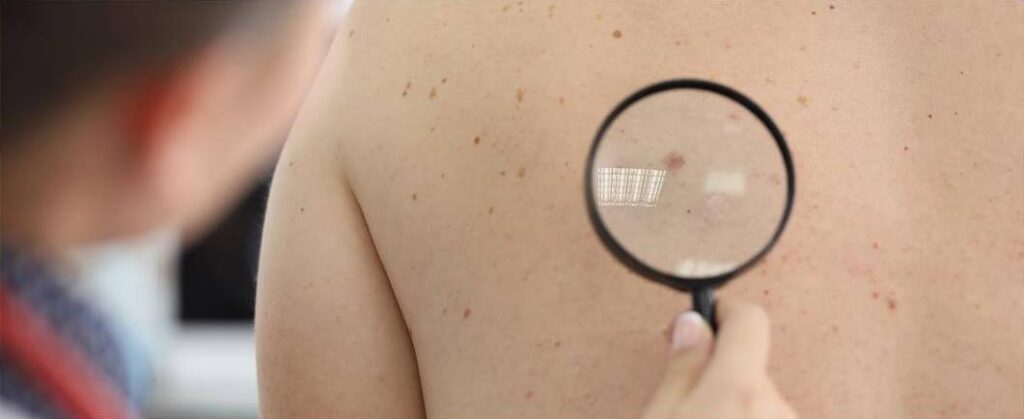Birthmarks, also known as moles, are common skin growths that can range in color from brown to black. They can be flat or raised, and are formed when skin cells that produce pigment (melanin) divide excessively. Most birthmarks are benign and pose no health risks. However, it is important to note that some birthmarks may indicate an increased risk of skin cancer, especially melanoma, the most dangerous type of skin cancer.

1. What is the connection between birthmarks and cancer?
Birthmarks can be associated with skin cancers, mainly melanoma, which develops in melanocytes, the skin cells that produce pigment. If a mole becomes atypical or a new mole appears in adulthood, this may indicate a risk of melanoma. It is also worth noting that factors such as genetic predisposition, UV radiation, the number of moles on the skin and their size increase the risk of melanoma.
Important: Not all moles are dangerous and not all moles indicate the development of cancer. However, there are some factors that may indicate an increased risk, and it is important to monitor moles regularly to detect possible changes.
2. What are the main warning signs?
Doctors use the “ABCDE” rule to help people determine if a mole could be a sign of cancer:
A – Asymmetry: If one side of a mole is different from the other, it can be a suspicious sign because the mole is atypical.
B – Edges: Fuzzy, irregular, or unclear edges of a mole can indicate the development of cancer.
C – Color: Moles with uneven color or different colors (black, brown, red, blue) can be suspicious.
D – Diameter: If a mole is larger than 6 mm in diameter (about the size of a walnut), it can be a signal of a risk of cancer.
E – Changes: If a mole changes shape, color, or size, it should be considered a warning sign.
In addition to these factors, it is important to pay close attention if a mole starts to bleed, itches, or becomes painful. If any such changes occur, it is recommended to consult a doctor immediately.
3. What are the factors that increase the risk of cancer associated with birthmarks?
Genetic predisposition: People with a family history of melanoma (the most aggressive form of skin cancer) are at higher risk of developing it.
It is advisable to monitor moles regularly if:
- You have many birthmarks (more than 50 moles on your body).
- You have a large or dysplastic (unusual) mole.
- You have fair skin that is prone to sunburn.
- You have had many sunburns, especially as a child.
- You are exposed to long-term UV radiation, for example, by regularly using tanning beds.
4. How are birthmarks diagnosed and treated?
If a mole is suspected to be malignant, your doctor will perform a dermatoscopy, a skin examination with a special device that magnifies the image and allows you to closely examine the structure of the mole. If necessary, a biopsy may be performed, where a small sample of tissue is taken for examination under a microscope to confirm or rule out the presence of cancer.
If melanoma or another malignant skin disease is diagnosed, treatment usually involves surgery. In more severe cases, chemotherapy, radiation therapy, or immunotherapy may be necessary.
5. How to reduce the risk of skin cancer?
Be careful with UV radiation: Avoid direct sunlight, wear a hat, light, non-synthetic clothing, use sunscreen.
Avoid tanning beds: Tanning beds increase the risk of skin cancer.
Check moles regularly: Do self-examination to notice changes in moles in time and see a doctor immediately.
A diagnosis of “cancer” should not be a judgment. Instead, it should be the starting point for a path to understanding and treatment based on the best options for the individual patient – both physically and psychologically. 🌿
📞 For more information and to apply for a consultation: +371 27 337 768
